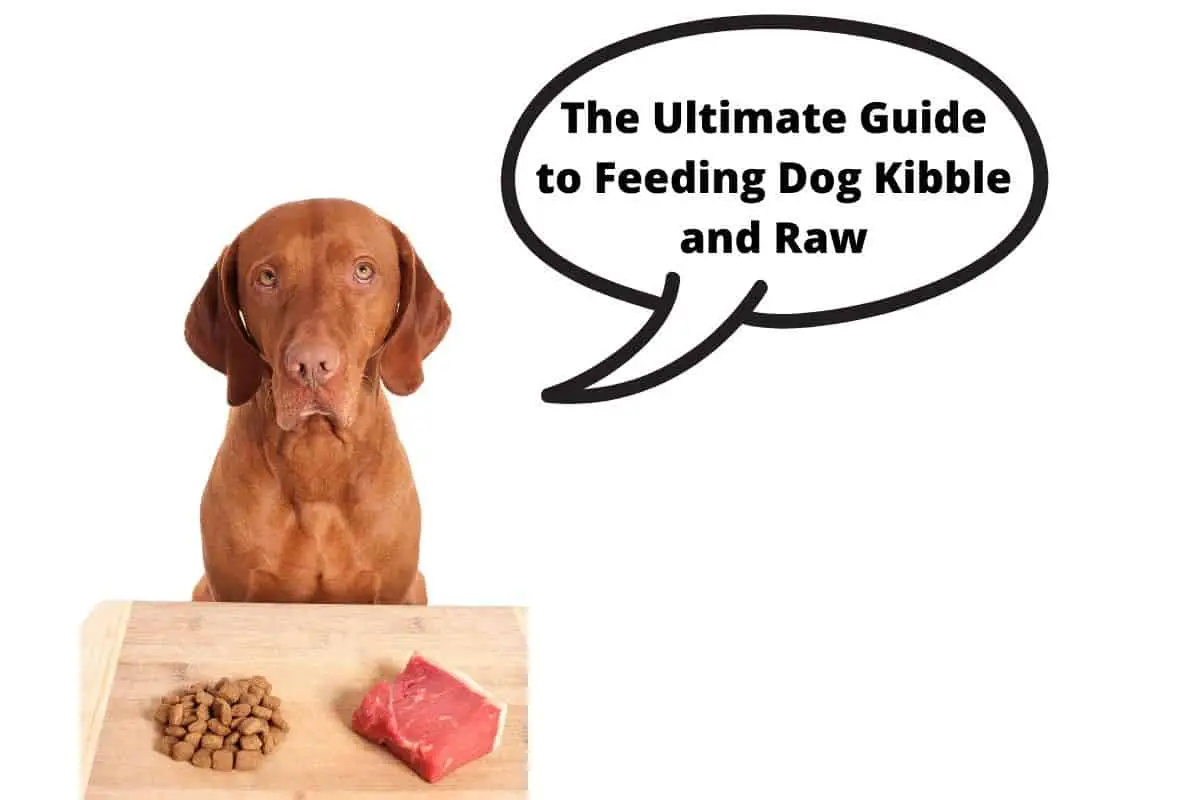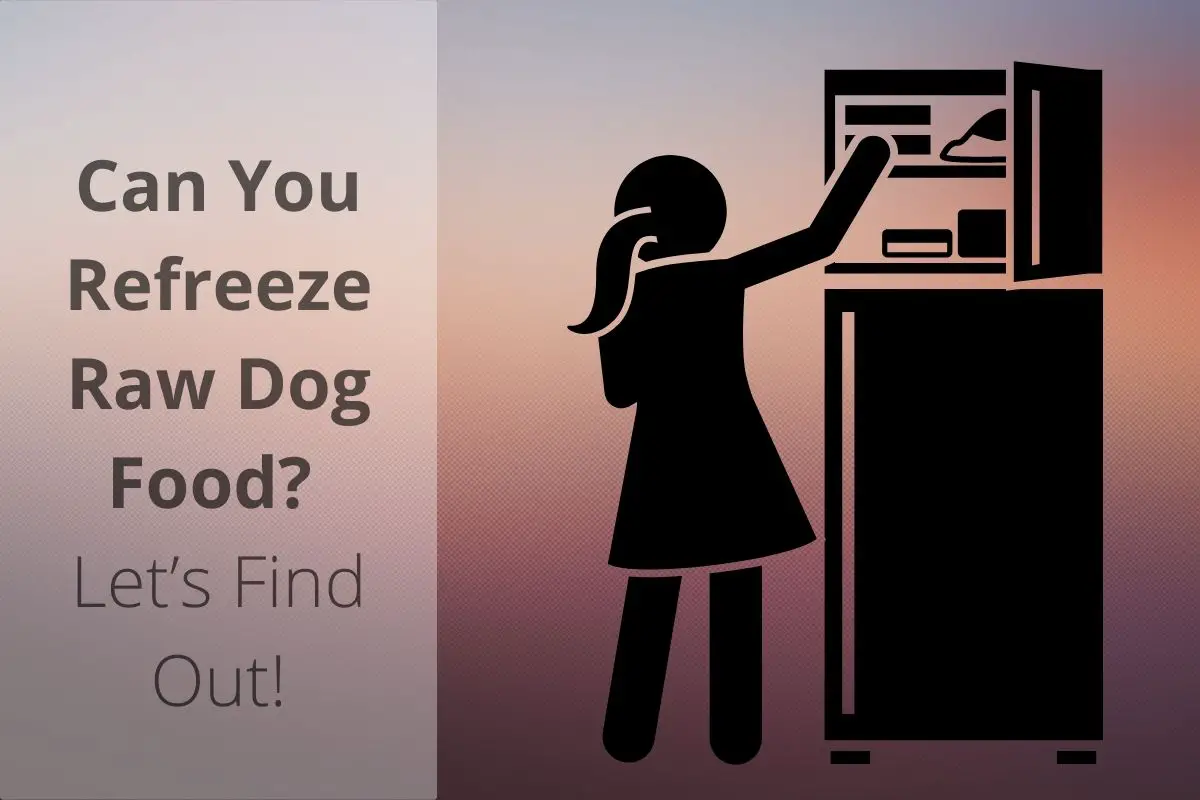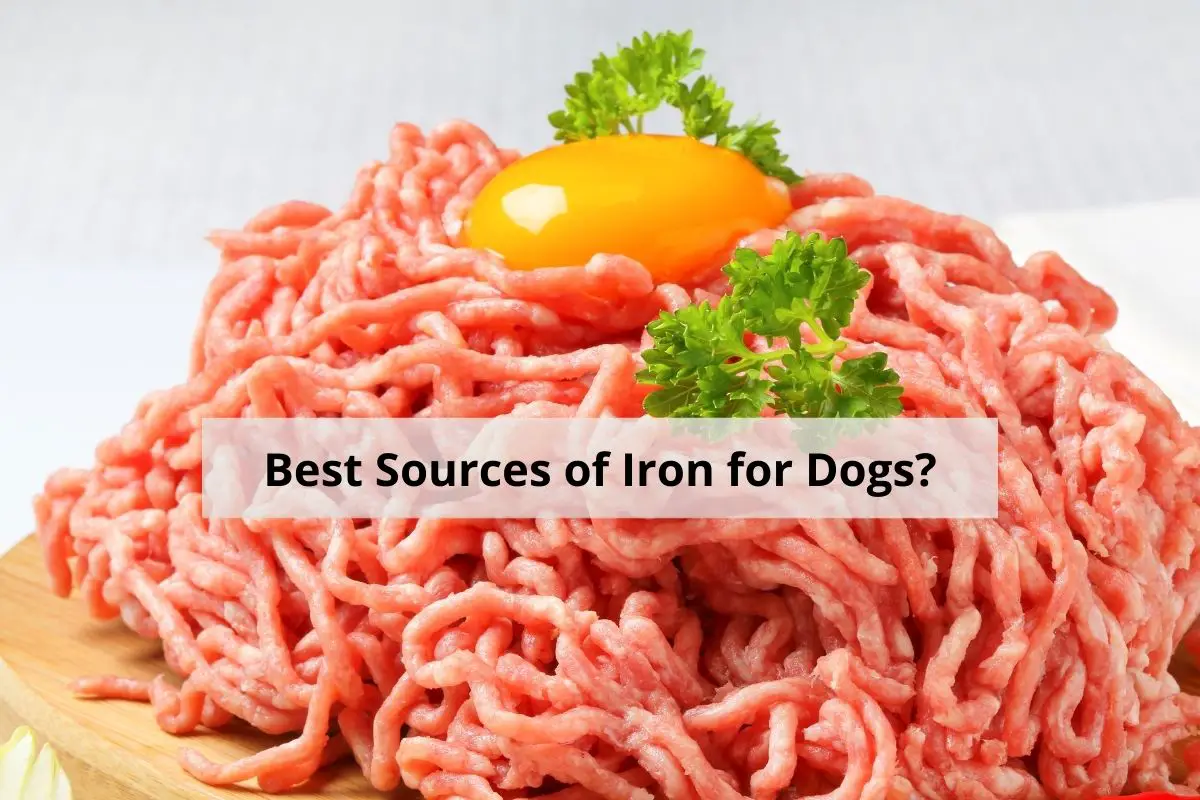This post contains affiliate links.
Raising a healthy and happy dog is one of your primary responsibilities as a pet parent. How energetic and healthy your dog is has a lot to do with what he eats. This is why you need to feed your dog different foods, such as kibble and raw food, for you to raise a dog you are proud of.
In feeding dog kibble and raw food, weigh the pros and cons of the two to tell which is the best option. Additionally, you should give the right amount of kibble or raw food based on your dog’s age and size. Also, consider combining kibble and raw for maximum benefits.
This article will explore more on kibble and raw, how to feed them, and their advantages and disadvantages. You will also learn how to combine kibble and raw foods in your dog’s diet. Read on to get the best for your canine companion.
Table of Contents
Kibble
The dog food that you buy in pet stores or supermarkets is collectively known as kibble. It is an affordable and convenient dog feeding method since it is readily available and does not require a lot of time to prepare. Additionally, there is a variety of kibble in the market since many brands manufacture dog foods.
For this reason, most dog owners opt for a kibble diet for their dogs. However, like other processed foods that you buy, even for humans, kibble has its downside as well. Considering these downsides will help you ensure that you are not causing any harm to your dog.
If you are using a kibble diet, there are crucial factors that you need to look out for.
Know the Amount That You Should Feed Your Dog
As mentioned earlier, the amount of food that a dog should eat differs based on its age and size. For this reason, when feeding the dog, pay attention and always have these factors in mind. The younger the dog, the more the amount of food required, meaning that you need more kibble. On the other hand, large breed dogs should get less food compared to small breed dogs.
Know the Ingredients of the Kibble
Kibble manufacturers promise to include all the necessary nutrients in the kibble. However, not every manufacturer is working towards your best interest. Therefore, do not risk buying the kibble without confirming its ingredients first.
Also, ensure that the ingredients offer all necessary nutrients for your dog. In case your dog seems unhealthy after eating a particular kibble, try using another brand since there may be nutrients missing in what he has been using. It is also advisable to consult your veterinarian on the best type of kibble to use to avoid such trial and error episodes.
Avoid Switching Between Different Kibble Brands
Sure, there are many kibble brands, all promising to offer the best for your furry friend. However, it is unwise to switch between the different brands now and then. After you have landed on a brand that works for your dog, stick to it. Otherwise, switching between different types of kibble now and then may eventually affect your dog’s health.
Buy Only What Is Enough
No matter how well your wallet is doing, do not be tempted to buy kibble in bulk for one dog. Most people go for this option since it is cheaper and convenient. However, when the food is exposed for a long time, it becomes oxidized, making it unfit for consumption. Therefore, when buying the kibble, buy enough for your dog(s) to exhaust in about three weeks.
Advantages of Kibble
- There is guaranteed nutritional completeness. However, this is only when you are buying the kibble from a quality and reliable brand.
- It is affordable.
- It saves time when preparing it for your dog.
- You can find it in many types and flavors.
- It is good for dental health since the hard bits act as abrasive cleaners.
- Kebble includes many added vitamins that are beneficial to your dog.
Disadvantages of Kibble
- The processing chemicals and flavors may have adverse effects on your dog.
- If you land on low-quality kibble, it may cause life-threatening effects on your dog.
- It gives a less pleasurable eating experience for the dog.
Raw Dog Food
Giving your dog raw food is feeding him as nature intended and as they were initially designed to eat. This is because dogs, like their close cousins, the wolves, and foxes, have many carnivore traits. For this reason, their digestive system is created to digest raw food without any mishaps.
When talking about raw food, most dog owners assume that raw food is only meat. Although meat takes a large portion of the raw food, it includes other essentials such as bones, organs, and some vegetables. Therefore, to ensure that the raw food you feed your dog is balanced, it needs to have more than just raw steak.
Why Is Raw Food Good for Your Dog?
There are many reasons why you should consider going for the raw option for your dog. Some of these reasons include:
- It is what nature intended them to eat: Although dogs are classified as omnivores, most of their characteristics prove that they are scavenging carnivores. Giving them what their carnivore’s roots intended them to eat is fairer to their digestive system. This can also help prevent common health problems, such as obesity and diabetes.
- Your dog gets all the nutrients: When food is cooked, it loses or degrades some of the essential nutrients for your dog. By feeding them raw food, your dog gets all these nutrients in their original value.
- He gets a beautiful coat: When your dog eats raw food, all his dietary needs are taken care of. As a result, he has a smooth and shiny coat.
- Fewer diseases: Like in humans, most of the health problems that dogs have may result from what they eat. Since raw food is natural, your dog evades most of the health problems brought about by processed foods.
From the points above, it is safe to say that raw dog food is a recommendable way to go for your dog. For your dog to enjoy the maximum benefits of eating raw foods, you need to ensure that whatever you are giving him is right.
First, you need to understand that raw dog food is suitable for all ages and breeds. However, the portions and formula vary based on the breed, life stage, and other specifications for your dog, such as health issues.
Raw Dog Food for Seniors and Puppies
Puppies and seniors have similar nutritional needs. Their bodies are changing and growing rapidly, meaning that they need more nutrients to grow. For this reason, ensure that their raw food includes minerals, such as calcium and phosphorus. These minerals are paramount in the bodies of puppies and seniors since they make their bones stronger.
Muscle meat and bones are excellent sources of these minerals. Additionally, meat toppers and whole eggs are also ideal for helping boost calcium, especially for puppies. When feeding these calcium and phosphorus sources, avoid overdoing it, especially in the puppy’s diet. You can tell whether your puppy is getting too much calcium if his poop is white or chalky.
Omega fatty acids are also necessary for seniors and puppies where the fatty acids support cognitive function and prevent cognitive decline. Your dog gets these nutrients from raw fish or adding fish oil supplements to his diet. When giving him raw fish, go for fish with soft bones to make it easy for your dog to eat and digest it.
Raw Dog Food for Large and Small Breed Dogs
Based on your dog’s breed, you need to modify his diet to support his specific needs. Large and small breeds have dietary differences, especially when it comes to their metabolism and skeletal structure. For metabolism, remember that large breeds have a lower metabolic rate than small breeds.
The small breed dogs burn calories even when they are inactive. With the large breed dogs, they do not burn their calories as well as their smaller counterparts. With this in mind, when feeding raw food to a large breed dog, give him food with low-calorie content, which his body can easily burn.
Sure, there is a thin line between underfeeding the dog and giving him only what the body requires. Strive to know where to strike a balance to ensure that your dog gets what he deserves. The other issue to consider is skeletal support.
Large breed dogs have a stronger skeleton than small breed dogs. For this reason, the large breed dogs do not require as much calcium in their diet as the small breed ones. Watch out not to overdo the calcium by avoiding any calcium supplements on large breed dogs. Raw bones will be enough sources of calcium for them.
For the small breed dogs, you need to feed raw bones several times a week to ensure that they have sufficient calcium. You can also include calcium supplements in a small breed dog’s diet if you have insufficient raw bones.
Safety Tips for Raw Feeding
Raw food can end up being risky to either you or your dog if mishandled. Therefore, as a responsible dog owner, it is crucial to learn safety tips for raw feeding.
Wash Your Hands
Raw food, especially raw meat, contains bacteria, such as salmonella and E. coli. It is possible to get such bacteria in your body by touching raw dog food. Therefore, always ensure that you thoroughly wash your hands after touching the raw meat. Additionally, clean all surfaces where you may have placed the raw meat to avoid contamination.
Do Not Leave the Food Exposed for Long
With foods such as kibble, the food can remain in the dog’s bowl for long, and the dog eats it when he feels that he is ready to. However, when it comes to raw food, there is a higher risk of contamination.
Therefore, avoid leaving the food exposed for extended hours if you expect the dog to eat it later. Instead, cover the food or put it in the fridge as soon as your dog walks away from it. Otherwise, serve only the amount that your dog will finish in one sitting.
Store the Food Well
Although dogs can handle bacteria that human bodies cannot, this does not mean that they are entirely safe. Instead, it means that you put your dog at risk when you fail to store his raw food the right way.
Do not leave the meat at high temperatures for long hours since it makes bacteria multiply, making it hard for the dog’s body to handle. This often results in digestion disorders. Therefore, ensure that raw food remains frozen until it is ready for use.
In the video below, you will learn more about preparing and feeding raw food for your dog, especially if you are a beginner at raw food:
Adding Raw Food to Kibble
The information above proves that both kibble and raw are ideal means for dogs. However, it is possible to maximize these benefits when you mix the two types of foods. This means that you serve your dog a meal that is 50% kibble and 50% raw. Using a feeding calculator will help you get the right measure for each of these foods.
The other option that you can go for when mixing kibble and raw is feeding each at a time. This means that you go for raw in the morning, and in the evening, you go for kibble. This is best to go for when you are trying to introduce raw food to your dog. After your dog adapts to the raw food, you can then use the 50/50 raw or kibble option since it is more recommendable.
Here is a video with more information on how to mix raw and kibble:
Conclusion
Getting the right food for your dog is one thing and feeding him right is another. For this reason, after you decide where to go raw or kibble with your dog’s feeding, the next step is to get a feeding guide that is convenient and good for your dog. Good luck keeping your dog well-fed and healthy with the help of the guide above.
Sources
- Top dog tips: Raw Diet for Dogs 101: The Ultimate Guide
- Dogs Naturally Magazine: Raw Dog Food Primer: 6 Simple Rules To Get Started
- Spoil my pets: A Beginners Guide to a Raw Food Diet for Your Dog
- Homes Alive: Raw Dog Foods for Beginners: Everything You Need to Feed Your Dog Raw
- Wolf Tucker: The Raw Feeding Guide
- Caliraw: The Topper Feeding Guide
- K9s Over Coffee: Helping Dogs Thrive With Raw Dog Food
- Earth Rated: What should you feed your dog? Raw vs. Kibble
- Toronto Dog Walking: Dog Food: Kibble Vs. Raw Vs. Homemade Diets – What’s Best for Your Dog?
Mrdogfood.com is a participant in the Amazon Services LLC Associates Program, an affiliate advertising program designed to provide a means for sites to earn advertising fees by advertising and linking to Amazon.com. We also participate in other affiliate programs which compensate us for referring traffic.




